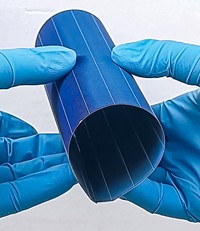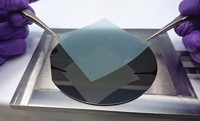Advertisement
Grab your lab coat. Let's get started
Welcome!
Welcome!
Create an account below to get 6 C&EN articles per month, receive newsletters and more - all free.
It seems this is your first time logging in online. Please enter the following information to continue.
As an ACS member you automatically get access to this site. All we need is few more details to create your reading experience.
Not you? Sign in with a different account.
Not you? Sign in with a different account.
ERROR 1
ERROR 1
ERROR 2
ERROR 2
ERROR 2
ERROR 2
ERROR 2
Password and Confirm password must match.
If you have an ACS member number, please enter it here so we can link this account to your membership. (optional)
ERROR 2
ACS values your privacy. By submitting your information, you are gaining access to C&EN and subscribing to our weekly newsletter. We use the information you provide to make your reading experience better, and we will never sell your data to third party members.
Materials
Easy Method Produces Flexible Transparent Electrodes
Electronics: Silver nanowire film could find use in displays and solar cells
by Katherine Bourzac
November 8, 2011

A new method for making flexible transparent electrodes from nanomaterials could provide an alternative to the indium tin oxide found in today’s flat panel displays and solar cells (ACS Nano, DOI: 10.1021/nn203576v).
Strong demand for liquid crystal displays for televisions and portable electronics has driven up the price of indium over the past several years, and China, the country with the greatest reserves of the element, restricted exports last year. Meanwhile, the production of indium tin oxide films for transparent electrodes is inefficient: The sputtering process wastes about 70% of the starting material. Yet another drawback is that indium tin oxide is brittle and not compatible with flexible displays or flexible solar cells.
Scientists are looking for alternative materials based on elements that have less volatile markets, that are compatible with more efficient production methods, and that provide greater mechanical flexibility, says Yang Yang, a materials scientist at the University of California, Los Angeles.
Silver nanowires are a promising alternative, Yang says, because each wire is highly conductive, and scientists can easily spray a surface with the nanowires to make a transparent mat without much waste. But silver nanowires don’t adhere well to surfaces, and they connect to one another weakly, so the nanowire network has poor conductivity. To fuse the nanowires to the substrate and to one another, scientists must use high temperatures reaching 200 °C or high pressures. These extra steps make the nanomaterials less attractive for widespread use because they are incompatible with the sensitive organic materials typically used to make flexible electronics, Yang says.
So he, postdoc Rui Zhu, and their colleagues developed a low-temperature method to make high-performance transparent electrodes from silver nanowires. Their process uses the well-known technique of spray coating; the key is the combination of materials. First, the researchers spray a solution of commercially available silver nanowires onto a surface. Then they spray a solution of titanium dioxide nanoparticles to create a hybrid nanoparticle film. As the film dries at 80 °C for 10 seconds, capillary forces pull the nanowires together, improving the film’s conductivity. The scientists finally coat the film with a layer of conductive polymer to increase the wires’ adhesion to the surface.
The resulting nanomaterial mat is highly conductive and adheres well, without the need for additional treatment. The material allows through about 83% of incoming light and has a resistance of 15 ohms per square, values that match those of indium tin oxide. The researchers also built solar cells using the new electrodes and found the cells’ performance comparable to that of solar cells made with indium tin oxide.
L. Jay Guo , an electrical engineer at the University of Michigan, Ann Arbor, admires the method’s practicality. He says the transparent electrodes are particularly promising for use in organic solar cells and organic light-emitting diode displays.
Yang says his group is now testing the transparent electrodes in other devices with funding from a major electronics company.





Join the conversation
Contact the reporter
Submit a Letter to the Editor for publication
Engage with us on Twitter